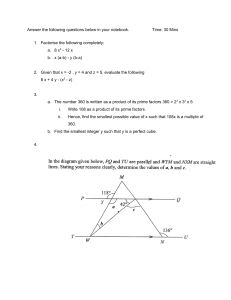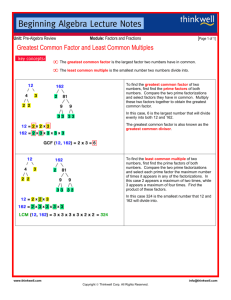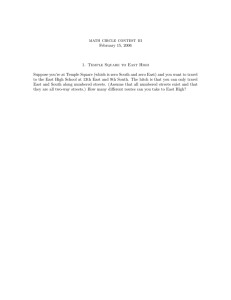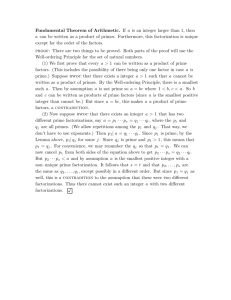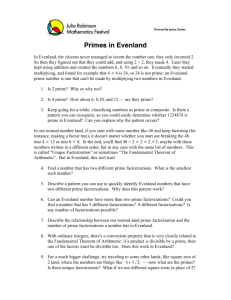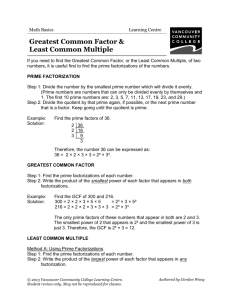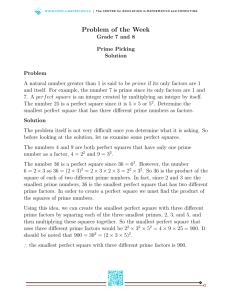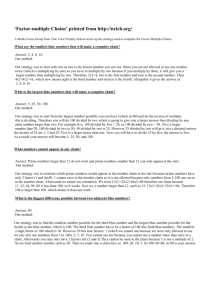Math Investigation: Factorizations & Prime Numbers
advertisement
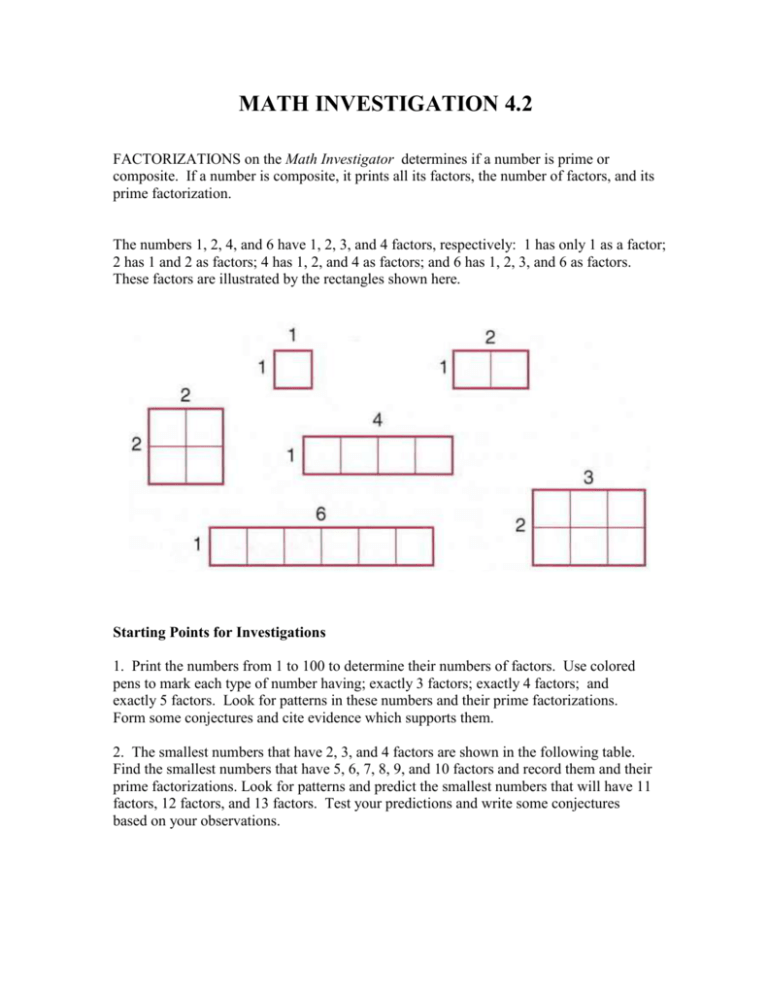
MATH INVESTIGATION 4.2 FACTORIZATIONS on the Math Investigator determines if a number is prime or composite. If a number is composite, it prints all its factors, the number of factors, and its prime factorization. The numbers 1, 2, 4, and 6 have 1, 2, 3, and 4 factors, respectively: 1 has only 1 as a factor; 2 has 1 and 2 as factors; 4 has 1, 2, and 4 as factors; and 6 has 1, 2, 3, and 6 as factors. These factors are illustrated by the rectangles shown here. Starting Points for Investigations 1. Print the numbers from 1 to 100 to determine their numbers of factors. Use colored pens to mark each type of number having; exactly 3 factors; exactly 4 factors; and exactly 5 factors. Look for patterns in these numbers and their prime factorizations. Form some conjectures and cite evidence which supports them. 2. The smallest numbers that have 2, 3, and 4 factors are shown in the following table. Find the smallest numbers that have 5, 6, 7, 8, 9, and 10 factors and record them and their prime factorizations. Look for patterns and predict the smallest numbers that will have 11 factors, 12 factors, and 13 factors. Test your predictions and write some conjectures based on your observations. Number of Factors Number 2 3 4 5 6 7 8 9 10 2 4 6 Prime Factorization 2x2 2x3 3. Extend the preceding table by printing intervals of 50 numbers from 101 to 150; 151 to 200; etc. Revise or extend your conjectures regarding the smallest number with a given number of factors. 4. (Optional) Describe a method for finding the smallest possible number with a given number of factors. For example, what is the smallest number that has exactly 200 factors?
